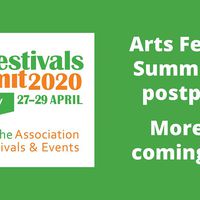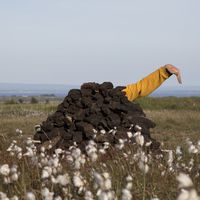#peripheries: Deep Weather | Artistic Practice at the Periphery
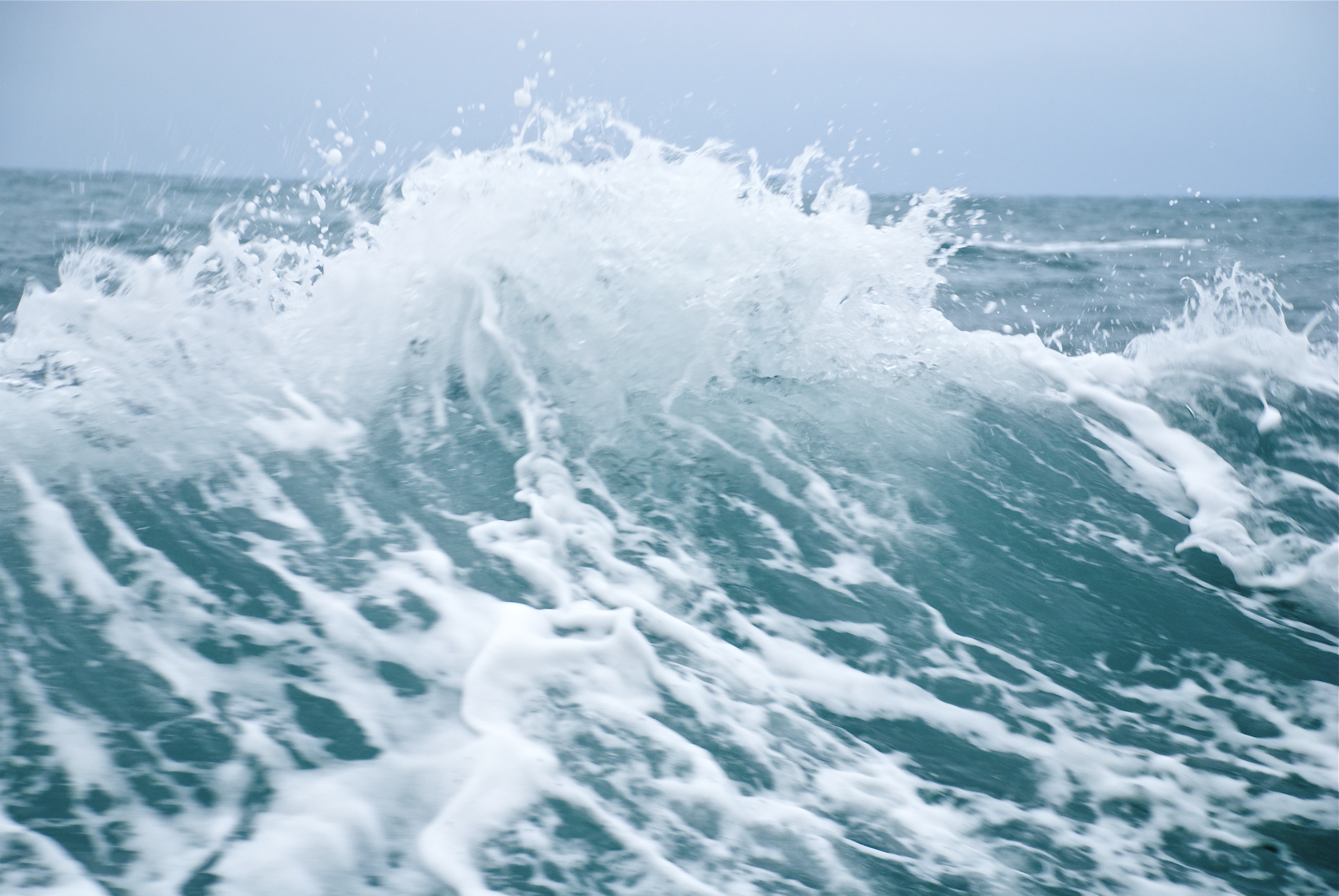
culture360.ASEF.org is featuring a new series of articles on the topic of #peripheries. The #peripheries have been regarded as being in the geographical margin, distant from the capital cities and cultural centres of countries. With an ongoing decentralisation trend, through this series of articles, we will look at various arts endeavours by artists, cultural professionals and art organisations who operate or occupy the peripheries in an urban society and the role that the arts play. In this first of two articles, Chris Baldwin examines the nature of artistic practice at the geographic, social and ecological periphery of Galway, Ireland and Plovdiv, Bulgaria, asking what we can learn about the nature of power and its contestations.
Wherever we find ourselves, whether at ‘kilometer zero’ in Madrid’s Sol or watching Medea at an open air ancient Roman theatre in south east Europe, we human beings have the tendency to place ourselves at the centre of things. For millennia, we peered up and put ourselves and our planet at the centre of the cosmos. So is being at the centre of things a natural instinct, a melancholic mechanism deeply rooted in our survival mechanism, a dangerous obsession which we are warned to rethink by ecologists and psychologists? Yet our economies, our politics, our families invariably tend to create hierarchies of power based on both geographical and social notions of the centre verses the periphery.
Let’s start with a confession. Last year I left the west of Ireland for good, the western periphery of Europe, and travelled slowly by land to Bulgaria (Thrace) – the furthest east one can travel and remain...well, in Europe. On arrival, I discovered that the two places, Galway in Ireland and Plovdiv in Bulgaria, were having a conversation through culture about the very same notion; life and living at the periphery.
Both Plovdiv and Galway are European Capitals of Culture in 2019 and 2020 respectively – perhaps a contradiction from the outset as capitals by definition are anything but peripheral. Yet capitals of culture are chances to celebrate artists and place, draw attention to the international scale of their work and, when things go well, leave a transformed cultural landscape for a generation to come for artists and citizens alike.
In both places, the oceans and their ecologies are the central focus for two particular artists. Ursula Biemann (Switzerland), whose work appears as part of the enormous Digital Ecologies exhibition in Plovdiv curated by Dimitrina Sevona. While Irish visual artist, Louise Manifold is making and curating Aerial/Sparks for Galway 2020, Ireland. Both women have chosen to work with oceans; drawing us to the subtle and urgent voices of natural systems collapsing under the strain of serving the centre.

Louise Manifold's Aerial/Sparks (Photo Credits: Louise Manifold)
The notion of periphery is useful if it makes us work harder at seeing what we might otherwise be missing; the interconnectedness and interdependence of everything. If we, our economy, and the planet are not at the centre, as ecologists, geographers and psychologists remind us, then where are we? Both Biemann and Manifold allude to an ecological connectedness and sensibility which places importance on the often-disguised relationship between organisms and their physical surroundings.
The 'centre' always believes it knows best, knows all there is to know, and sees the periphery as dependent upon it and yet sees itself as having little or no dependency on the periphery.
Centre-focused thinking insists that it can and will make all decisions in an adequate fashion. Biemann and Manifold disperse this kind of thinking with persistent and gentle metaphors and the working methodologies employed in their work.
Ursula Biemann has two pieces in Plovdiv’s exhibition Digital Ecologies. Firstly, Acoustic Ocean (2018), a video installation with audio, and Deep Weather (2013) described as a video essay. Located on the Lofoten Islands in Norway, Acoustic Oceans explores the sonic ecology of marine life. We are taken on a journey to the sea’s edge by a scientist/explorer who is also a member of the indigenous Sami people. Through her use of acoustic and scientific instruments, we gain momentary access to a marine world of interconnected biology, creatures and communication systems. A world of utter interdependence is revealed – a world of which we are usually unaware and unconscious.
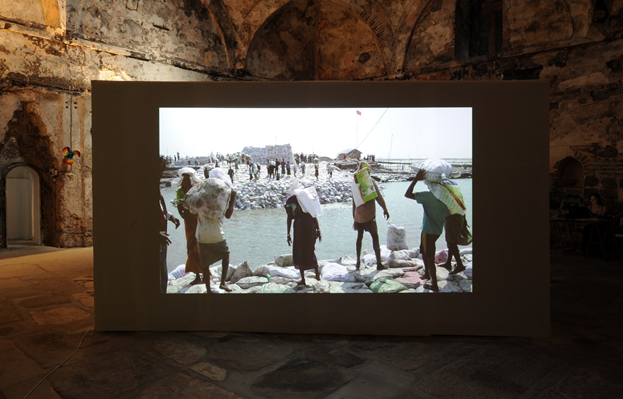
‘Deep Weather’ in Digital Ecologies Exhibition (Photo Credits: Emil Mirazchiev)
Biemann’s piece Deep Weather is more explicit and searingly painful. As the tar sands are seen dug and plundered by monstrous machines in the boreal forests, we watch as thousands of Bangladesh women, children and men fill bags with mud and spend their lives constructing imperfect defenses against rising sea levels. One provokes the other. But the other remains a response. The connection between the two activities are made obvious for those who watch this short piece of work. My car is your rhythmic drowning.
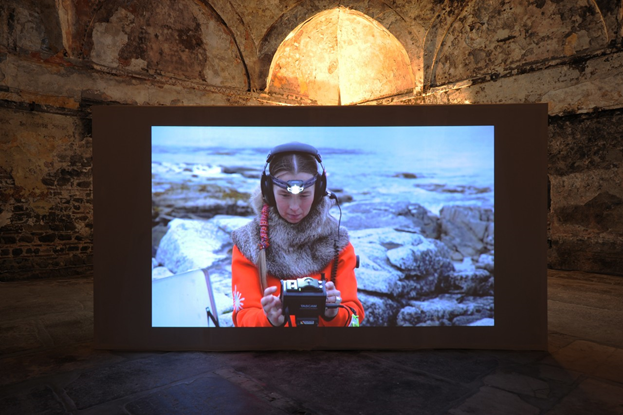
‘Acoustic Oceans’ in Digital Ecologies Exhibition (Photo Credits: Emil Mirazchiev)
Over the last few years, artist Louise Manifold has been traveling across oceans on the Irish scientific research vessel, The Celtic Explorer, researching her project AerialSparks and bringing artists, writers and composers together in a series of experimental radio broadcasts and other works. Her own words point to the ecological and historical forces in her work. For many female Surrealists, she tells us, the ocean was figured as a transformative space that linked hybrid monsters from western and other cultures.
Her work comes from what the Surrealists called “objective chance”; where one's ideas are not planned but drawn out from the unconscious, often through accidental or chance happenings. This process of mental drifting or “chance thinking” reminds her of a little lancer boat they had on board; “Washed up on the shores of Galway, this little boat will be returned to the Atlantic, set adrift again but fitted with a tracker so we can track where it is to be carried by the ocean”.
At this time of climate crisis, examples of artistic work happening at the supposed ‘geographical periphery’ are turning out to be at the nexus of important philosophical and political investigations. Actually, should this be so surprising?
This article is written by, Dr. Chris Baldwin (www.chrisbaldwin.eu) , who was the Creative Director of Galway (Ireland) European Capital of Culture 2020 and Curator for Interdisciplinary Performance for Wroclaw (Poland) European Capital of Culture 2016. His new book on citizen-centred dramaturgy and collective trauma will be published by Routledge in 2020.
Useful Links:
Ursula Biemann:
www.digital-ecologies.arttoday.org/2019/ursula-biemann.html
Louise Manifold:
Plovdiv European Capital of Culture 2019: http://plovdiv2019.eu/en
Galway European Capital of Culture 2020: https://galway2020.ie/en/
Similar content
24 Aug 2019
27 Oct 2022
from - to
09 Nov 2020 - 12 Nov 2020
from - to
22 May 2019 - 24 May 2019
posted on
17 Feb 2020
By Laura Shen
06 Oct 2019



